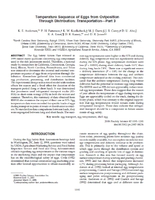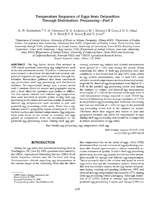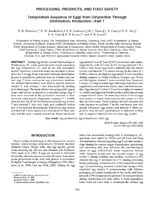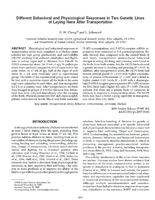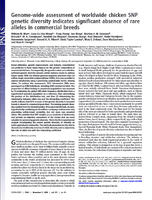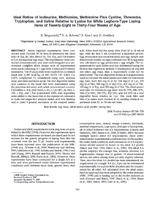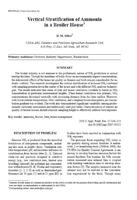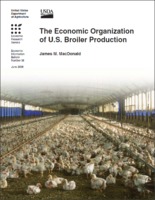Browse Items: 10
Small Enterprise Chicken Study, 2007
The Small Enterprise Chicken Study, 2007 is NAHMS’ third study of the poultry industry. The study provides national information on biosecurity practices and bird movement on operations with 1,000 to 19,999 chickens. The study was conducted in August 2007 and was based upon a statistically selected sample of 2,511 operations.
Validation of a Combi Oven Cooking Method for Preparation of Chicken Breast Meat for Quality Assessment
Quality assessment results of cooked meat can be significantly affected by sample preparation with different cooking techniques. A combi oven is a relatively new cooking technique in the U.S. market. However, there was a lack of published data about its effect on quality measurements of chicken meat. Broiler breast fillets deboned at 24-h…
Temperature Sequence of Eggs from Oviposition Through Distribution: Transportation--Part 3
The Egg Safety Action Plan released in 1999 raised many questions concerning egg temperature used in the risk assessment model. Therefore, a national study by researchers in California, Connecticut, Georgia, Iowa, Illinois, North Carolina, Pennsylvania, and Texas was initiated to determine the internal and external temperature sequence of eggs from…
Temperature Sequence of Eggs from Oviposition Through Distribution: Processing--Part 2
The Egg Safety Action Plan released in 1999 raised questions concerning egg temperature used in the risk assessment model. Therefore, a national study was initiated to determine the internal and external temperature sequence of eggs from oviposition through distribution. Researchers gathered data from commercial egg production, shell egg…
Temperature Sequence of Eggs from Oviposition Through Distribution: Production--Part 1
During Egg Safety Action Plan hearings in Washington, DC, many questions were raised concerning the egg temperature (T) used in the risk assessment model. Therefore, a national study was initiated to determine the T of eggs from oviposition through distribution. In part 1; researchers gathered data on internal and surface egg T from commercial…
Different Behavioral and Physiological Responses in Two Genetic Lines of Laying Hens After Transportation
Physiological and behavioral responses to transportation stress were examined in a chicken strain selected for high group productivity and survivability (HGPS) resulting from reduced cannibalism and flightiness in colony cages and in chickens from Dekalb XL (DXL) commercial strain. At 13 wk of age, 96 pullets per strain were randomly assigned to…
Genome-wide assessment of worldwide chicken SNP genetic diversity indicates significant absence of rare alleles in commercial breeds
Breed utilization, genetic improvement, and industry consolidation are predicted to have major impacts on the genetic composition of commercial chickens. Consequently, the question arises as to whether sufficient genetic diversity remains within industry stocks to address future needs. With the chicken genome sequence and more than 2.8 million…
Ideal Ratios of Isoleucine, Methionine, Methionine Plus Cystine, Threonine, Tryptophan, and Valine Relative to Lysine for White Leghorn-Type Laying Hens of Twenty-Eight to Thirty-Four Weeks of Age
Seven separate experiments were conducted with Hy-Line W-36 hens to determine the ideal ratio of Arg, Ile, Met, Met+Cys, Thr, Trp, and Val relative to Lys for maximal egg mass. The experiments were conducted simultaneously and were each designed as a randomized complete block design with 60 experimental units (each consisting of 1 cage with 2 hens)…
Vertical Stratification of Ammonia in a Broiler House
The broiler industry is not immune to the problematic nature of NH3 production in animal rearing facilities. Though the headlines of today focus on environmental impact considerations, the detrimental effects of the house air quality on farmers and birds remain considerable for industry viability. This research investigated the vertical…
The Economic Organization of U.S. Broiler Production
Broiler production in the United States is coordinated almost entirely through systems of production contracts, in which a grower’s compensation is based, in part, on how the grower’s performance compares with that of other growers. The industry is undergoing a gradual structural change as production shifts to larger broiler enterprises that…
 An official website of the United States government.
An official website of the United States government.




